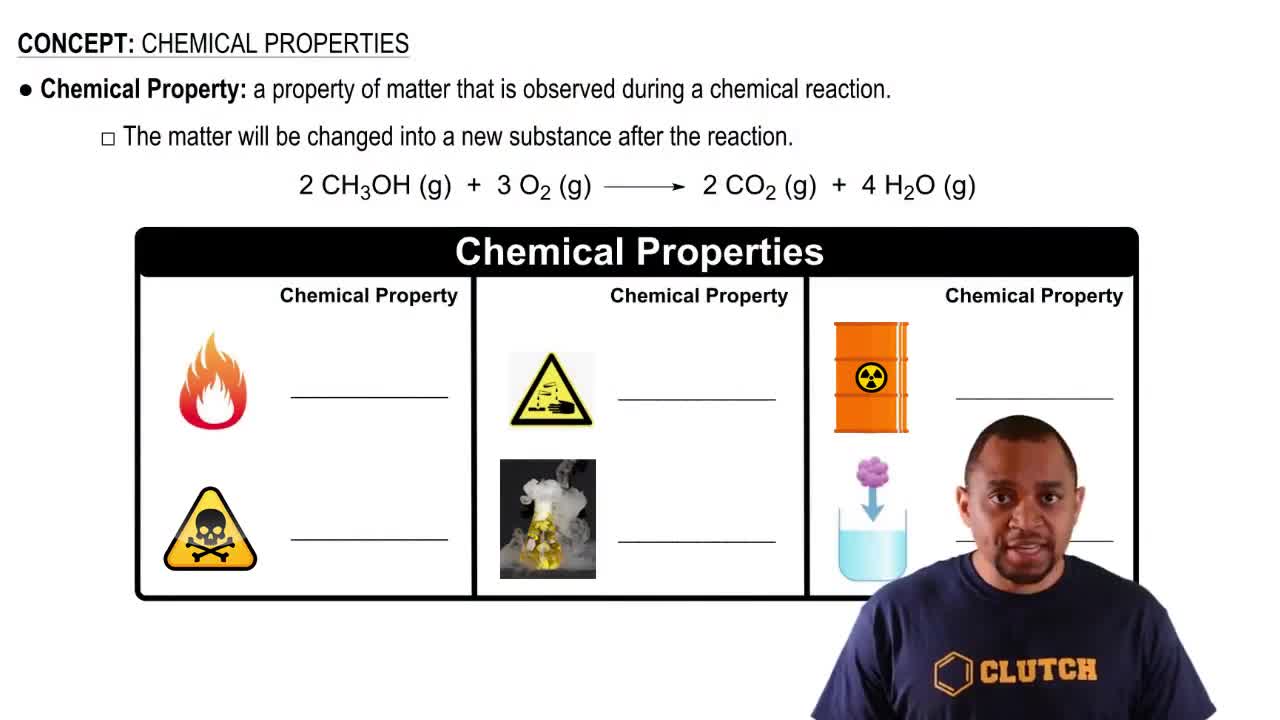Very small semiconductor crystals, composed of approximately 1000 to 10,000 atoms, are called quantum dots. Quantum dots made of the semiconductor CdSe are now being used in electronic reader and tablet displays because they emit light efficiently and in multiple colors, depending on dot size. The density of CdSe is 5.82 g/cm3. (e) If you wanted to make one 6.5-nm dot from multiple 2.5-nm dots, how many 2.5-nm dots would you need, and how many CdSe formula units would be left over, if any?
Ch.3 - Chemical Reactions and Reaction Stoichiometry
Chapter 3, Problem 94
The fluoride ion reacts with water to produce HF. (a) Write out the chemical equation for this reaction.

Verified Solution
Video duration:
2mWas this helpful?
Key Concepts
Here are the essential concepts you must grasp in order to answer the question correctly.
Chemical Reactions
A chemical reaction involves the transformation of reactants into products through the breaking and forming of chemical bonds. In this case, the fluoride ion (F-) reacts with water (H2O) to form hydrofluoric acid (HF). Understanding the nature of reactants and products is essential for writing balanced chemical equations.
Recommended video:
Guided course

Chemical Properties
Ionic and Molecular Compounds
Fluoride ion (F-) is an example of an ionic species, while hydrofluoric acid (HF) is a molecular compound. Ionic compounds typically form from the transfer of electrons between metals and nonmetals, while molecular compounds result from the sharing of electrons. Recognizing the difference helps in predicting the behavior of substances in reactions.
Recommended video:
Guided course

Ionic Compounds Naming
Acid-Base Chemistry
The reaction of fluoride ion with water can be understood through the lens of acid-base chemistry, where HF acts as a weak acid. In this context, water can act as a base, accepting a proton (H+) from HF. This concept is crucial for understanding the properties of acids and bases in aqueous solutions.
Recommended video:
Guided course

Arrhenius Acids and Bases
Related Practice
Textbook Question
530
views
Textbook Question
(b) Hemoglobin, the oxygen-carrying protein in red blood cells, has four iron atoms per molecule and contains 0.340% iron by mass. Calculate the molar mass of hemoglobin.
1608
views
Textbook Question
Cinnamaldehyde is a compound that is responsible for the
characteristic aroma of cinnamon. It contains 81.79% C,
6.10% H, and the remaining is oxygen. Its molar mass is
132 g/mol. Determine its molecular formula.
1607
views
Textbook Question
Vanillin, the dominant flavoring in vanilla, contains C, H, and O. When 1.05 g of this substance is completely combusted, 2.43 g of CO2 and 0.50 g of H2O are produced. What is the empirical formula of vanillin?
1337
views
Textbook Question
An organic compound was found to contain only C, H, and Cl. When a 1.50-g sample of the compound was completely combusted in air, 3.52 g of CO2 was formed. In a separate experiment, the chlorine in a 1.00-g sample of the compound was converted to 1.27 g of AgCl. Determine the empirical formula of the compound.
2585
views
2
rank
Textbook Question
A compound, Na2Cr2Ox, where x is unknown, is analyzed
and found to contain 39.70% Cr. What is the value of x?
393
views
